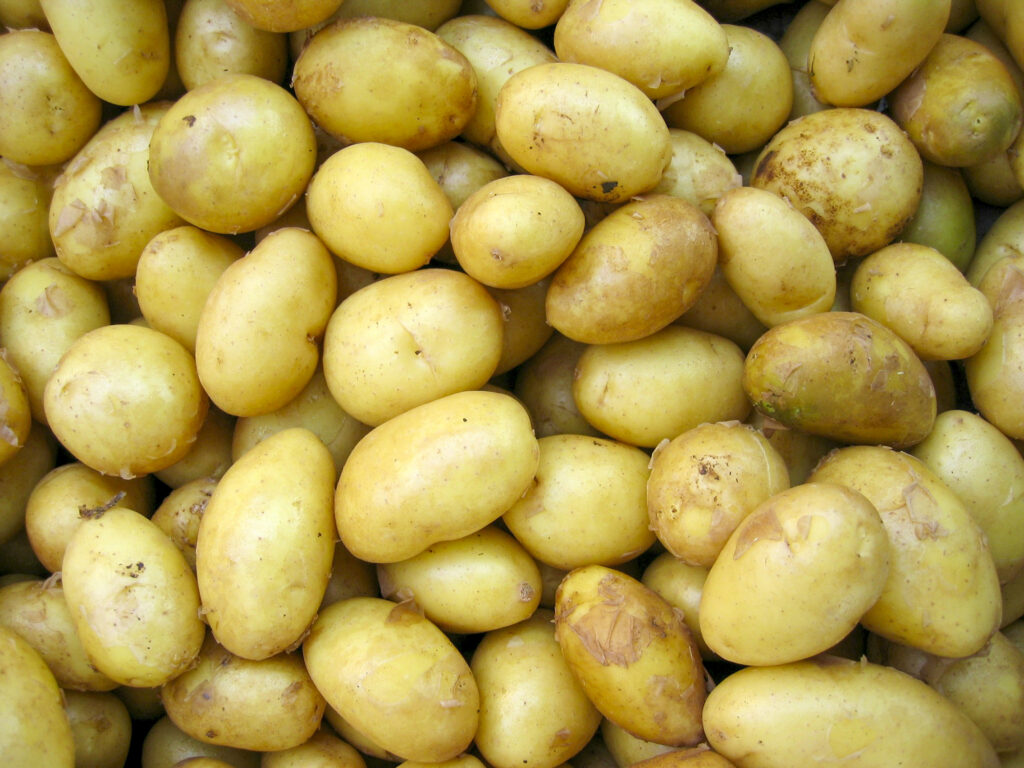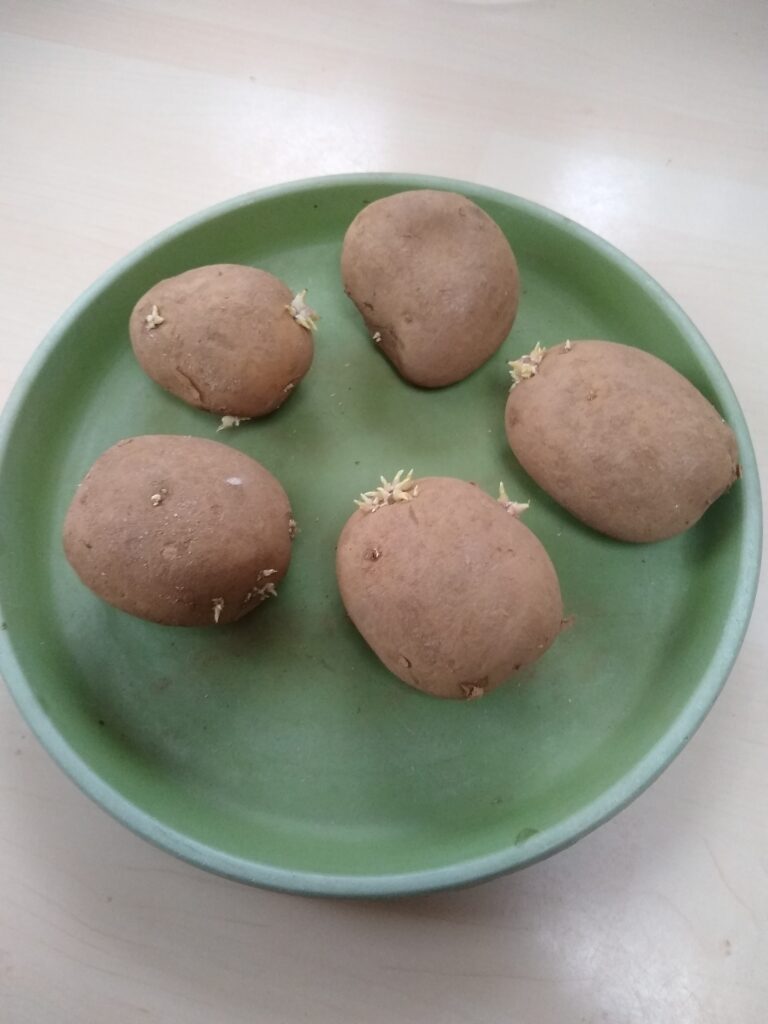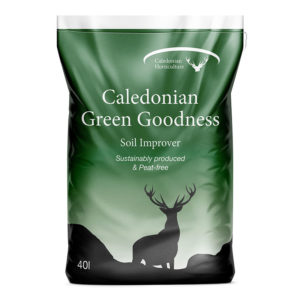Guest post by Kevin Jameson
Hi. I’m Kevin Jameson, an allotment gardener for nearly 30 years together with my lovely wife Angela. I’ve been interested in gardening all my life thanks to my Mum. She’s 90 and is still as keen as ever. Once you have the bug it seldom leaves you.
We try to garden in a sustainable way using organic methods. Mostly with very good results and a steady supply of produce but as any seasoned gardener will say, you never stop learning. That’s part of the joy of it. I’m very pleased to have an opportunity to contribute to the blog and share some of our gardening experiences with you.
Get The Most Out Of Your Potato Crop
We put a fair bit of effort into growing our own potatoes. The crop is usually large enough to last us for about 7 months even after sharing plenty with friends and family.
Growing your own also extends the variety of types and qualities you can try. Many of which are truly delicious but seldom available in supermarkets.
Potatoes are not difficult to grow. If you simply dig a small hole on a sunny plot of ground, pop a tuber in and cover it up, you’ll always get a result of some sorts. However, as we have found, if you pay attention to some key details you can greatly improve the quality and quantity of your crop.

Start Early
Aim to get your spuds in the ground in March. This will allow a good length of growing season.
Faster-maturing Early and Second early varieties should then be ready in advance of the arrival of potato blight in July/August usually.
Use Certified Seed Potatoes
Scotland is a world leading producer and exporter of quality seed potatoes, meaning plenty of local availability. Buying healthy, certified seed potatoes means greatly reducing the risk of planting infected tubers and the chance of a spoiled crop.
Sprout The Seed Potatoes (Chitting)
Chitting the seed potatoes indoors in a cool spot from February helps to give them a good start when planted in the ground. Spread the potatoes out on a flat tray and lightly cover over with newspaper. Don’t allow the sprouts to become long and fragile. About 15mm is just right for planting.

The Potato Bed Thoroughly, Choosing A Sunny Spot
While other vegetables may thrive when using no-dig cultivation methods, potatoes in our experience, do best if planted in ground that has been well dug over. This seems to greatly reduce the damage that can be caused by slugs and potato cyst nematodes which are often attracted to the tubers. Our potatoes are seldom seriously affected by these pests. When digging over, turn in some chicken manure as a soil conditioner and fertiliser.
Plant Deep, Adding Plenty Of Organic Material
Potatoes thrive in soil with lots of added organic matter. Garden compost, well-rotted manure, leaf mould and Green Goodness or Kelpie Compost are all good options. Make a deep/wide trench, one spade depth, fork in some organic material at the bottom, then firm down gently. Place the tuber in the base of the trench and cover it over gently. Backfill the trench, still adding organic matter in with the soil and gently firming down. When the trench is almost full, add some high-potash potato fertiliser.
The idea is that each seed tuber will grow upwards and outwards through the organic material and fill the deep trench with lots of potatoes.
When the first shoots begin to show after about 3 weeks, use a rake to start earthing up along the row. Keep doing this for a couple of weeks until the mound is about 20cm tall. Don’t worry about covering the small plants, they still force themselves upwards through the soil.
Potatoes Need Lots of Room to Grow
There is no benefit to planting potatoes closer together in an effort to get a bigger crop. We now plant half as many seed tubers as we did 10 years ago and actually get a larger crop. Tubers planted too close together will simply compete for food, sunlight and moisture. The result will be fewer and smaller potatoes overall.
Space seed tubers at least 35cm apart in the trench and rows need a 60cm space between the tops of the mounds.
Water
After all that effort to get the potatoes planted, don’t forget that the growing tubers need plenty of water to swell up. A regular good soaking during dry spells is important for a high yield. Potatoes grown in tubs are particularly thirsty.
Two Common Diseases and What to Do
Potato blight usually affects the plants during warm and humid weather from midsummer onwards. After it appears, it often spreads rapidly and the leaves will wither. Look for brownish black patches on the edge of the leaves. The best solution is to act early by cutting down all the top growth, bagging it and removing everything from site leaving the ground completely clear of any leaf and stem debris. Leave Maincrop potatoes in the ground to ripen by September/October.
Common scab is also often found on home grown potato tubers. It has a slightly rough warty appearance on the smooth skin.
Fortunately, scab doesn’t do much harm to the tuber even if it might not look nice. Just scrub, scrape or peel off the blemishes before cooking.
Harvesting
An advantage of deep planting and earthing up is that the ripe potatoes can be left in the ground to be used when needed. Even in winter, there is a risk of frost damage to tubers near the surface but most should be unaffected.

-
 Builder’s Bag Kelpie Compost£72.00 inc VAT
Builder’s Bag Kelpie Compost£72.00 inc VAT -
 Builder’s Bag Green Goodness£52.00 inc VAT
Builder’s Bag Green Goodness£52.00 inc VAT -
 40L Green Goodness£3.50 – £4.50 inc VAT
40L Green Goodness£3.50 – £4.50 inc VAT


Thanks for all the tips. We find we can’t leave ours in the ground because we still have a problem with wireworms. I’ve read that planting mustard as a green manure can help and we did that this autumn, but I don’t know the result of that yet. It certainly won’t hurt the soil! Do you plant in the same location every year or recommend rotating locations?